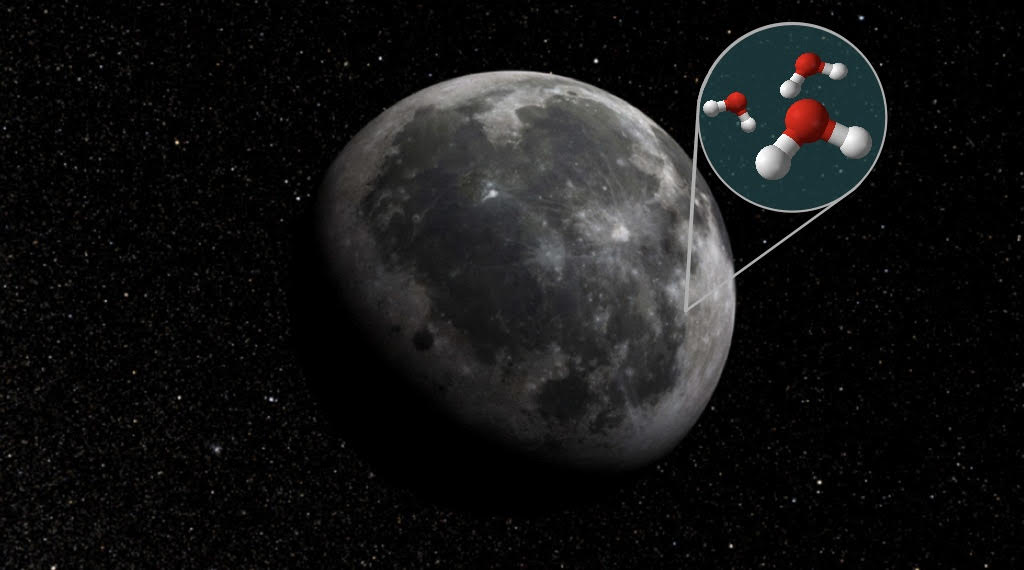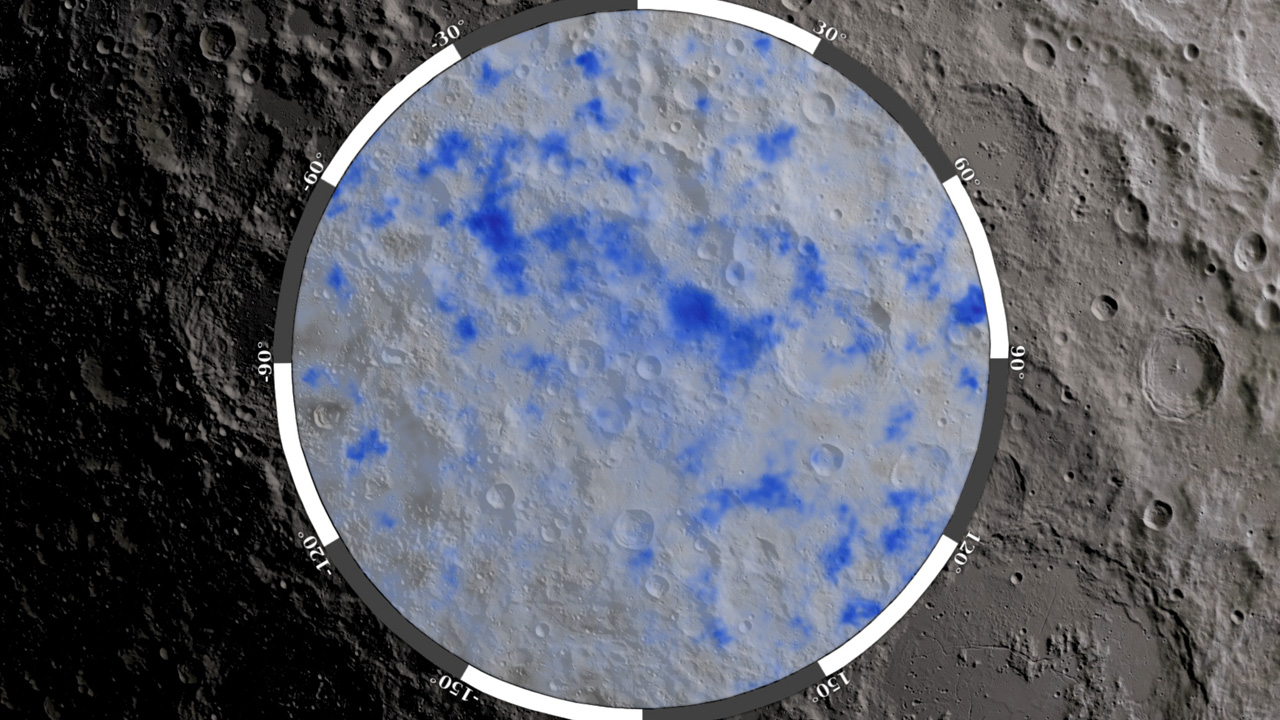
SCIENCE COOKIES
Science articles with chocolate chips
Water on the moon
Published: 30/12/2020
Author: Paulina Vargas

After the Apollo astronauts arrived on Earth in 1969, the lunar surface was believed to be completely dry, with no indication of any source of hydration and much less water. But that belief has changed, because on October 26, NASA has shared results published in Natural Astronomy in which the presence of water on the Moon is confirmed.
This discovery was made possible by the Stratospheric Observatory for Infrared Astronomy, SOFIA. SOFIA is a joint project of NASA and the German Aerospace Center, which consists of a Boeing 747SP airliner modified to carry a 106-inch diameter telescope.

Image Credit: NASA
A test with great results
SOFIA is originally used to observe distant objects, such as galaxies and black holes, using the stars as a guide to keep the telescope fixed on what is being observed. But since the Moon is such a close and bright celestial object, it was not certain that SOFIA could stay fixed on it, since it would occupy almost the entire visual field that is used for the guide stars.
In August 2018, operators decided to do a test Moon observation, and in that simple test they found much more than expected: they found H2O molecules on the Moon.
How was it discovered?
Prior to SOFIA's discoveries, in 2015 there was already an indication of the presence of some hydration on the Moon, thanks to information collected from 3 independent spacecraft, Moon Mineralogy Mapper (M3 ), Deep Impact Spacecraft, and Visual and Infrared Mapping Spectrometer (VIMS). Well, they observed a characteristic absorption feature of 3 μm on the Moon, which is typical of water (H2O) and hydroxyl (OH), but they were unable to differentiate between these compounds.
Using the 3 µm band, water and hydroxyl appear to appear the same; However, taking into account that a fundamental vibration of water molecules emits in a spectral line of 6 μm , and that hydroxyl does not have this characteristic, the 6 μm band was used in SOFIA to be able to confirm the presence of H2O on the Moon.
The results
The water molecules were found in the sunny Clavius Crater, located in the southern hemisphere of the Moon, and which is one of the largest craters visible from Earth.

Image Credit: Ernie Wright, NASA Visualization Explorer.
The presence of 100 to 400 µg g-1 of water could be estimated; as a comparison point, the Sahara desert contains 100 times the amount of water that SOFIA detected in the lunar soil.
Indeed, the amounts of water found on the moon have been very small, but they turn out to be far from insignificant, since it represents the posing of new questions that demand an answer. It is not yet known exactly how these water molecules were generated or how they reached the moon, and even more surprising, how they managed to be preserved on the Moon despite the fact that it does not have an atmosphere and the water is in a sunny area of Moon.
Until now, there are only estimates and grounded theories to try to answer these questions, such as that they may be in the form of ice under the shadows [1] , or the water could be trapped in small pearl-shaped structures that form from the high heat created by micrometeorite impacts on the lunar surface [2] .
Undoubtedly, the presence of water, be it a lot or a little, already represents a factor of great impact for future missions to explore the universe. NASA's Artemis program now has a new factor to consider for the next launch of the first woman and the next man to the Moon in 2024.
References
https://science.sciencemag.org/content/326/5952/562
https://science.sciencemag.org/content/326/5952/565
https://science.sciencemag.org/content/326/5952/568
https://svs.gsfc.nasa.gov/11756
https://www.nasa.gov/press-release/nasa-s-sofia-discovers-water-on-sunlit-surface-of-moon/





